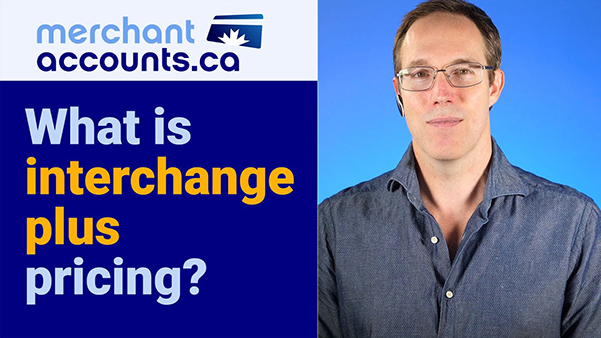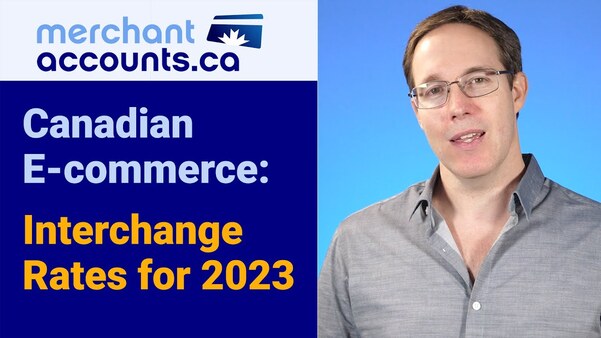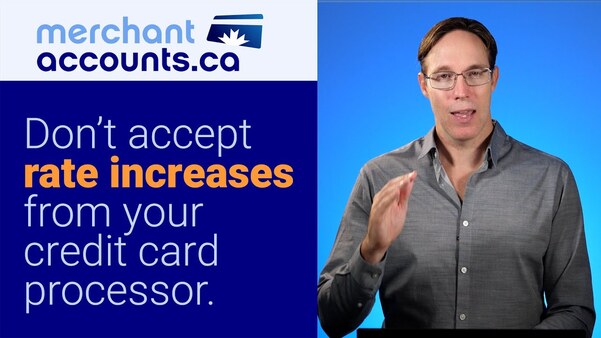Updated on March 31, 2023
Originally posted on May 16, 2022
by David Goodale
How to Negotiate Lower Credit Card Processing Rates
(Slightly edited from video transcript for greater readability)
Key Takeaways

You want the best possible rate every time you process a credit card for your business. It's a perfectly understandable desire. Turning that desire into a reality is a matter of negotiating effectively, while having and setting reasonable expectations.
Lower rates are primarily dependent on two factors: The trading volume of your business and The risk associated with your product or service. There are other considerations as well, and we'll explore them all in this article.
Don't negotiate in the dark. Get your facts and numbers straight.
A surprising number of merchants will try to shop around or renegotiate the rates without understanding their existing pricing. The first stop along the way is to look at your current pricing. Make certain that you understand what you are currently paying. If you can't do that, learn how to analyze your credit card processing statement to figure out your effective discount rate. You simply can't get started without understanding what you are currently paying.
Processing Volume
In the payments business, rates are primarily determined by trading volume. Let's think about the far ends of the spectrum for a moment. If your company processes $1,000 per month in sales, and the processor has a margin of 1%, they are going to earn about $10/month from your account. It does not take much for a processor to eat through $10 worth of support costs over the course of a month.
On the flip side of the coin, consider a huge company processing $100,000,000 per month. If the processor was earning a 1% margin this would translate to $1,000,000 per month in revenue. These are very extreme examples, and they drill home the point:
While it is true that the a primary factor in pricing account is the trading volumes of the business, it is also affected by other criteria such as product risk, which we will explore further below.
Product Risk also Impacts Your Processing Fees
Let's take a moment to think about the risk associated with certain products or services. Again, we'll think at two different ends of the spectrum. In the first example, let's consider hand knitted mittens. In comparison we'll think of an online casino.
I am not trying to make any sort of stereotypical statement, but am only making the point that some products have more risk associated with them than others. Selling mittens vs online blackjack. Selling t-shirts vs guns. Selling endangered unicorn hides vs children's colouring books. (Okay... stretching on the last one).
The risks associated in delivering your product or service will play a big role in determining how much margin above interchange is required by your payment processor (and thus the rate you will pay).Why does the risk associated with the product impact your rates? Chargebacks!
A chargeback occurs when a cardholder contacts their bank to forcibly reverse a transaction. When a chargeback happens, the cardholder is entitled to get their money back. If the merchant is unable or unwilling to provide a refund, the payment processor will have to bear the responsibility. (The payment processor has to come up with the money, even if the merchant cannot). To put it simply, the higher the risk associated with a merchant account, the greater the probability that the payment processor can potentially lose money.
How do I know if I have a high-risk business?
If your product is higher risk, expect the processor to want a larger margin in terms of the rate. If your product or service is more likely to have disputes, requiring more of the processors time to manage, and most importantly increased chargeback risk you'll pay a higher fee.
If you are wondering whether your business is high risk or not then you need to (honestly) consider the probability that your customer will either not get what they paid for, or if your product is valuable (like gold or bitcoins) in which case fraudsters might try to use stolen credit cards to purchase your product. If you need help figuring this out then contact us for a free consultation.
Make sure you are on interchange plus pricing
Interchange plus pricing is a pricing model in which the payment processor clearly discloses their processing fees. It's kind of like going to a car dealer and the dealer shows you their exist wholesale cost to purchase the vehicle before reselling it to you. It's the only way to negotiate low rates effectively.
If you aren't familiar with interchange then take a few minutes to learn about interchange plus pricing.
How much margin is reasonable?
Your credit card processor must earn some money for the service that they provide. Most business owners understand this. That is why you will not pay only interchange, but will be quoted a rate that is above interchange. The extra bit above the interchange cost is the margin that the credit card processor gets to keep.
For example, if you are quoted a rate of "Interchange + 0.50%" it means that the margin that the processor gets to earn for providing your credit card processing service is 0.50%. Working with this example, if you processed a basic Visa card your rate would be:
1.65% (interchange) + 0.50% (margin to processor) = 2.15% (the rate you pay)There are other pricing models, but interchange plus pricing is the most transparent and desirable from a rate negotiation perspective.
From a value perspective as a business owner, you want to feel that you get a good value for the money you pay, and that the support you receive is also good. (Both from a customer service perspective, and also a technical / uptime perspective).
Before you have your first conversation you should set a goal in your mind for the margin that you are comfortable with paying for your payment processing services. The payment processor needs to earn reasonable fees for the service (they are exposed to chargeback risk) but shouldn't be gouging you. A processing fee of 0.25% would be a good example for a low risk, high volume business. A processing fee that is higher, perhaps 0.75% would apply to a lower volume business. These examples are only a point of reference of what might be typical for different types of merchants. In extreme circumstances the processor may quote a higher or lower rate.
Time is your ally! When to ask for a rate reduction.
At some point you started accepting credit cards for the first time. At that point in time your business was young and growing. When you initially started accepting payments, it's quite possible that much of the focus was simply on making sure your application was approved as it was on getting the lowest rate that you could.
Has your business changed since you started accepting payments? Is it profitable? Has it grown? If your business has improved compared to when you first got payment processing then you should revisit the processing rate with your provider.

Business History
You should be eager to tell your story. Consider you are on the phone and the payment processor learns this:
"Hello, we've been in business for 22 years, process $300,000 in monthly sales, receive fewer than two chargebacks per year, and have a 90% customer retention rate."
What payment processor wouldn't want to work with a merchant like that? Make sure, early on in the discussion, that they know the most important facts about your business. Tell your story in a positive light, and don't be shy to share your successes.
Financial Strength
We can tie a fairly straight line from rates into the financial strength of the company. If your company is financially stable, it likely means that it will continue operating for a long time to come. Further, if chargebacks did occur there is little chance of the credit card processor having to fork over money, because you would have more than enough money to cover any chargeback disputes that come in.
Strong financials are actually very important when it comes to both approval and rates. If you established your merchant account back when you were a startup, and if the balance sheet has strengthened over the years, that is absolutely something that you should point out when renegotiating the rates with your credit card processor.
Processors reward loyalty
A credit card processor survives and thrives because of it's client base. A sign of a good processor is one with a very low turnover of accounts. That is because this means that clients are happy and are choosing to stay and work with them long term. A processor with a lot of churn in the customer base is a major sign that customers are unhappy. You want to work with a processor with a low churn rate.
If you are working with a good processor, they will value your business. Hopefully, you have the type of relationship with your processor in that they are open about this, and open to discussing your needs. One of the most important things to point out (in a respectable way) is that you have been a long time customer of the processor, and that you are happy, but would like to revisit the rate.
Tell the processor that you are a loyal customer, and you are willing to stay loyal. Tell them that you are open to signing into a term (so you will work with that processor for a period of years, usually 3 years).
Even if you aren't working with the same processor as before, you can still offer to sign a longer term agreement as a negotiating point in order to secure a lower rate for your business. You certainly don't need to sign a long term (nobody can force you to do that), but if you are happy, and if you plan to stay long term, you should be able to use this as a negotiating point in order to secure a lower rate. (As a side note, I generally recommend to avoid long term agreements when you are moving to a new credit card processor. Ideally, if you are moving to a new credit card processing platform you'd like to sign a month to month agreement. This gives you time to evaluate the service and make sure you are happy with it. Some credit card processors allow this, while others do not.)
Tiered Rates: Get them to commit to lowering your fees
Is your business likely to grow? Perhaps significantly? Some payment processors (such as us at Merchant-Accounts.ca) are open to tiered pricing. This is where you get a lower rate as your trading volumes grow. For example, you could agree that when you achieve $200,000 per month in sales, your processing cost is reduced by 15%. This is a win-win for both parties. It tells the payment processor that you're confident in your business, and that it will grow, and you get to know that as you grow your rates will be reduced.
This is a particularly good idea for young high-growth merchants. Note that not many payment processors will do pre-agreed rate tiers (but the good ones will).

Is the salesperson that you are working with knowledgeable, or are they reading off of a pricing template?
If you work with a junior salesperson, or someone without pricing authority your negotiation will probably not be productive. Oddly, having read this article you will know more about interchange than some salespeople that actually work in the industry. (Really!)
This is where the type of organization that you want to work with will come into play. If you work with a smaller, more client focused merchant account provider you far more likely to be able to engage into a meaningful discussion about the rate. (Admittedly, this is not an entirely unbiased point, since at Merchant Accounts.ca our model is to have each client work directly with one specific member of our team who becomes their dedicated account manager). However, the point stands that if your inquiry is routed to a call center agent without the ability or authority to engage in a meaningful discussion, the odds of securing the rate that you are looking for are significantly reduced. This is where you will have to use tact and determine through your conversation if the person speaking to you genuinely has the knowledge, ability and authority to negotiate the rate with you.
Summary
Your credit card processing costs should be reduced over time. It does not matter who your credit card processor is, because it is universally true that as your account ages you should be rewarded. As a merchant you should leverage your business strength and your history of a strong relationship with your processor in order to make it happen. In fairness to your processor though, realize that your account must be in good standing, the company must be in good financial shape, and you must ask for it. It won't happen if you don't make it happen.
It starts with thinking about what you want, setting a realistic goal, and making a case for why it should happen. If you do this, and more specifically, if you go in having done your research, understanding your current pricing, and understanding interchange then you can secure a fantastic value for your business.
As a final word of caution, remember that not all processors are equal. If you get to the point that you are re-signing for a new contract term you should make sure that you have examined the pricing and are on either an interchange plus or flat pricing model. If you go to all the effort of doing your research and negotiating for a better rate, then you most certainly deserve to get what you were promised. That is where staying with a processor you trust can be the easier decision, and moving to a new processor slightly stressful. For that reason, always make sure that you have read and checked over the new agreement carefully before signing. If your processor has a history of treating you well, and a reputation of treating it's other clients well, then you should be in good hands. If it has been a rocky relationship consider taking that processing history and bring it to a new processor that will treat your business well and value you as a client.
Need professional guidance?
Contact us for a free one hour consultation.
Can I Help Lower Your Processing Fees?
If you found this content helpful, will you give me the opportunity to quote on your business?
View Rates











